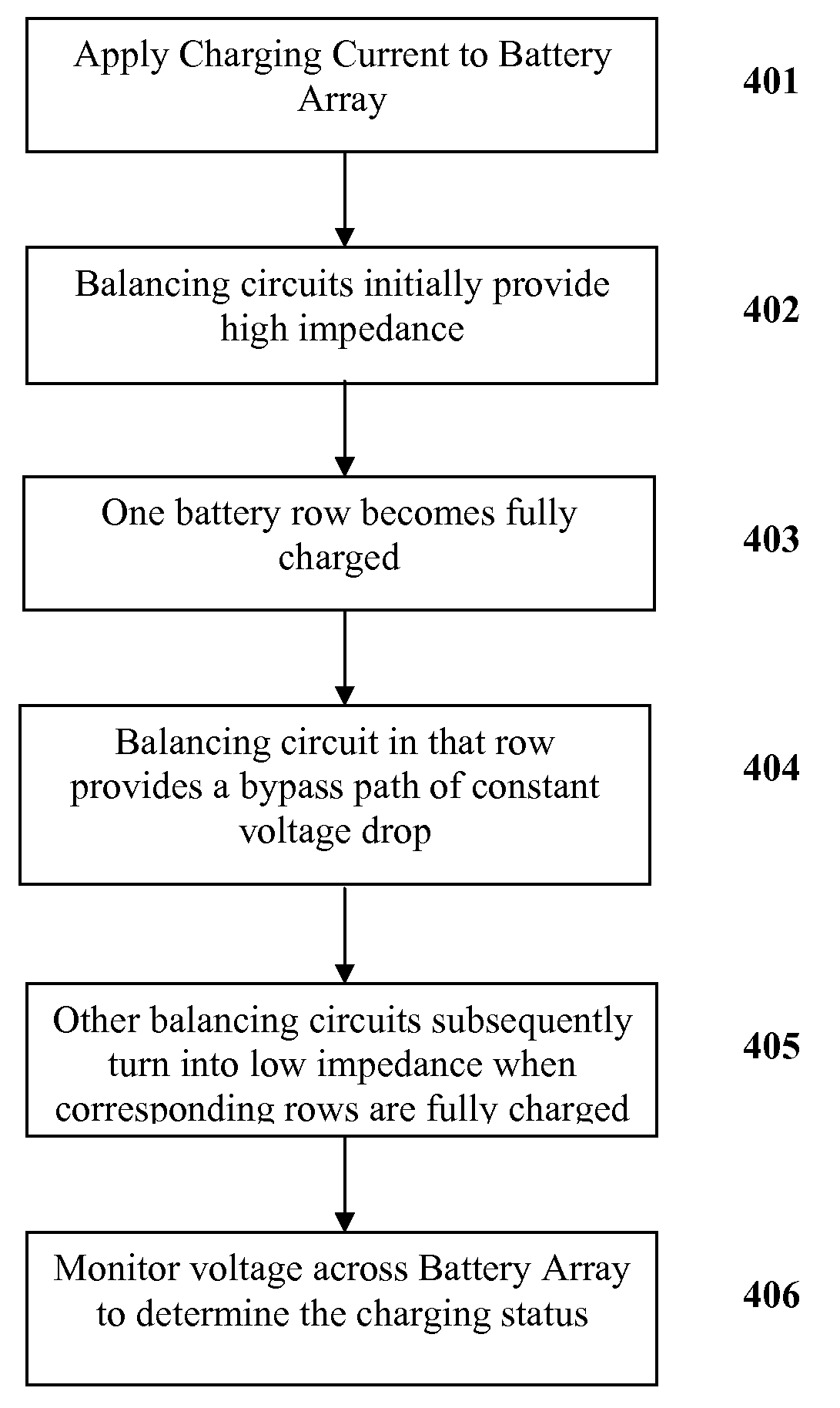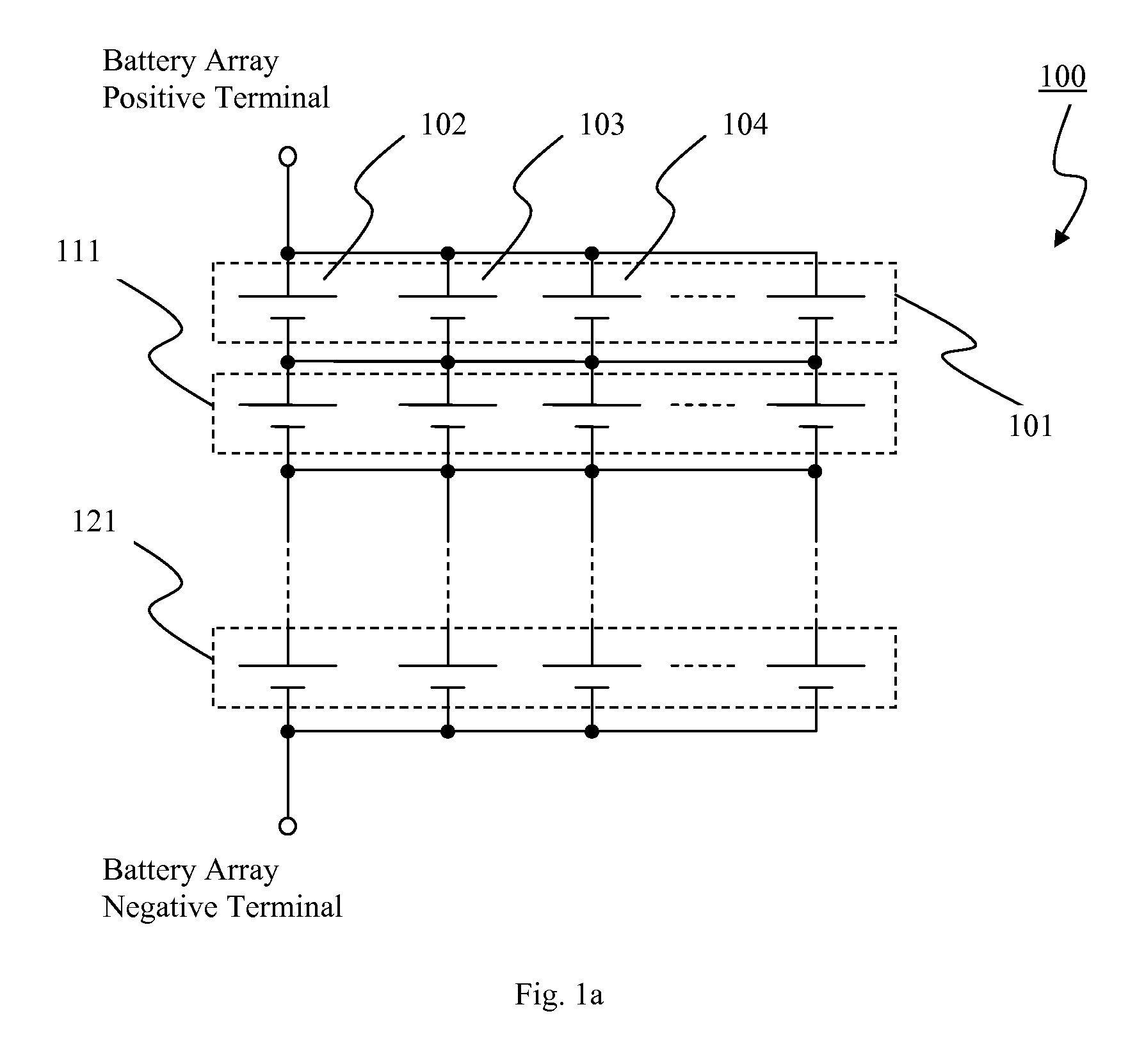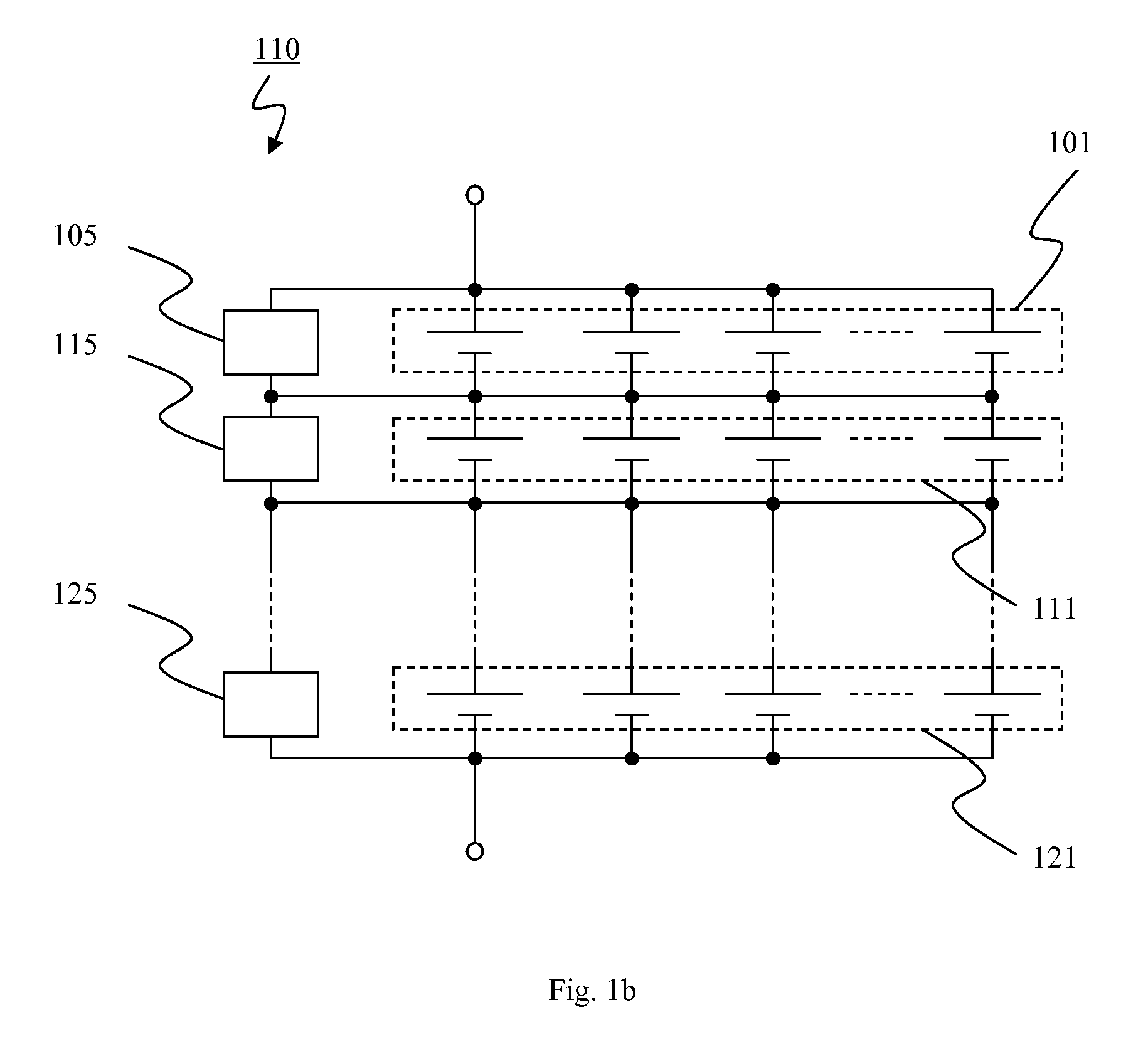Rechargeable battery array
a rechargeable battery and array technology, applied in the field of rechargeable batteries, can solve the problems of limited electric voltage and current delivered by a rechargeable battery, long charging time of the cells in the battery, and limited charging current flowing into the non-full cells of the full cell, etc., and achieve the effect of efficient charging
- Summary
- Abstract
- Description
- Claims
- Application Information
AI Technical Summary
Benefits of technology
Problems solved by technology
Method used
Image
Examples
Embodiment Construction
[0037]Methods and apparatus for charging rechargeable battery array are disclosed hereinafter. In the following description, numerous specific details, including battery array size, charging voltages, currents, and the like are set forth. However, from this disclosure, it will be apparent to those skilled in the art that modifications and / or substitutions may be made without departing from the scope and spirit of the invention. In other circumstances, specific details may be omitted so as not to obscure the invention.
[0038]FIG. 1a illustrates a battery array 100 in conventional art composing of battery rows 101, 111, 121, etc. connected in series to provide a desired battery voltage. Each battery row comprises of battery cells 102, 103, 104, etc. connected in parallel to provide a desired battery current. Due to manufacturing process variation, production defects, or aging effect of batteries, characteristics such as energy storing capacity may vary from battery to battery.
[0039]FIG...
PUM
 Login to View More
Login to View More Abstract
Description
Claims
Application Information
 Login to View More
Login to View More - R&D
- Intellectual Property
- Life Sciences
- Materials
- Tech Scout
- Unparalleled Data Quality
- Higher Quality Content
- 60% Fewer Hallucinations
Browse by: Latest US Patents, China's latest patents, Technical Efficacy Thesaurus, Application Domain, Technology Topic, Popular Technical Reports.
© 2025 PatSnap. All rights reserved.Legal|Privacy policy|Modern Slavery Act Transparency Statement|Sitemap|About US| Contact US: help@patsnap.com



